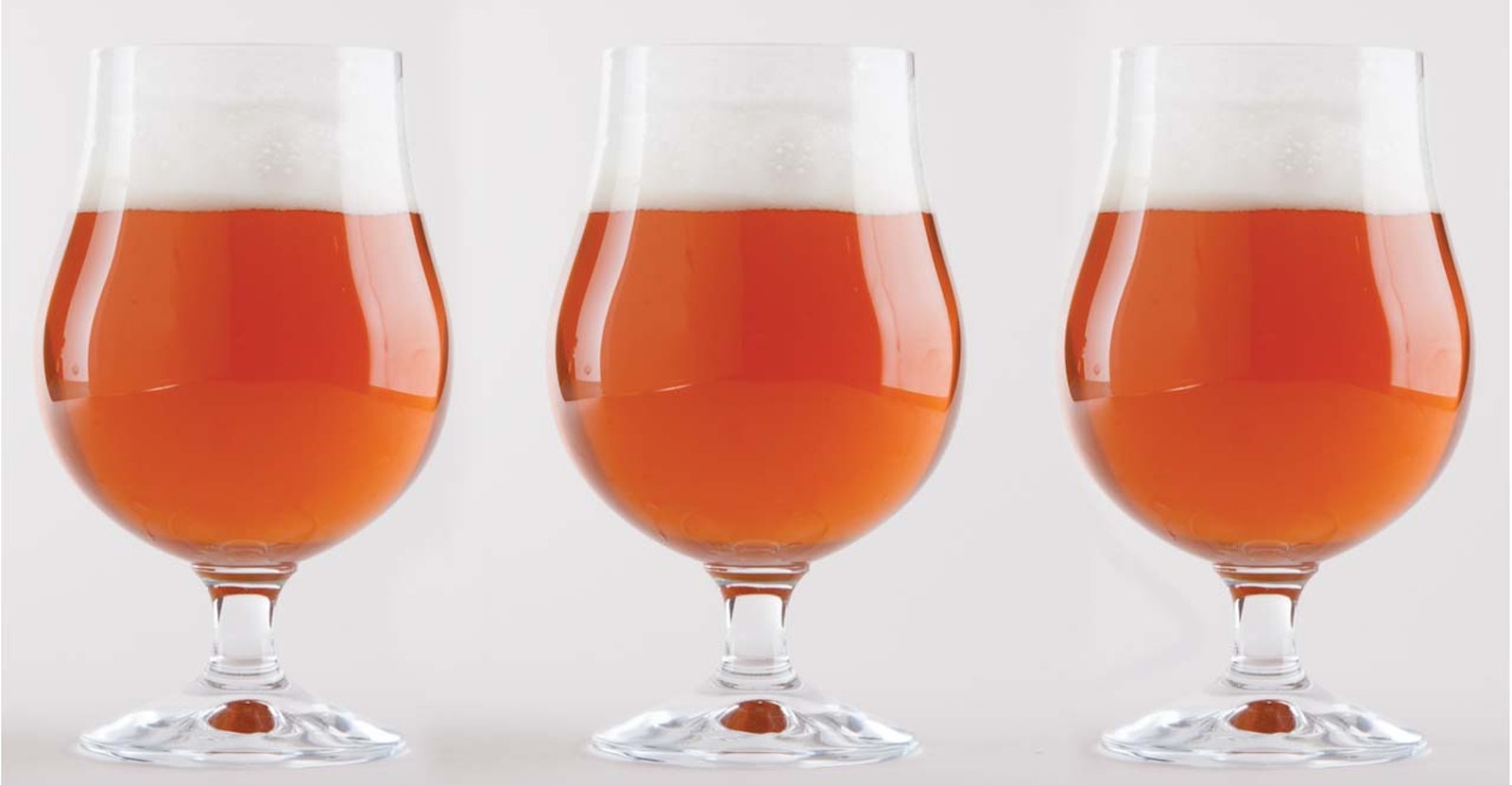“I don’t like Belgian beers.” Or at least that’s what people will tell you. The reality is that I love Belgian beers, but it’s an easy style to overdo in terms of the complexity of the recipe and flavor profile. “Complex” doesn’t have to mean “loud,” though, and this week we’ll look at what might be the least-Belgian of the Belgian styles: the Belgian Pale Ale.
Style
Belgian Pale Ale (BPA) is a significant departure from its abbey beer cousins and is much less driven by esters, phenols, and alcohols. Instead, BPA relies more on its grist to carry the flavor, with the other characteristics (hops and fermentation character) transitioning from leads to supporting roles. They still matter, of course—and the fruit esters are, in my mind, what really make this beer—but rather than acting as the full orchestra, they are more like a really solid quartet.
When properly balanced, this beer should be a showcase of bread, toast, biscuit, and caramel. It is (ironically) not pale, but rather, a nice, rich amber, with some examples settling solidly into the red range. It can also be more bitter than most other Belgian styles, though even a “bitter” Belgian beer isn’t going to come across that way, thanks to the muted level of perceived bitterness from the grist and the esters (which, in addition to being fruity, seem sweet to most palates). This is a great entry-level Belgian beer for those who are a little overwhelmed by the more common Dubbels and Tripels out there, and it’s the style I recommend when people tell me they “don’t like Belgians” (and here I assume they mean the beers, not the people…).
Ingredients
Start this beer with a healthy dose of Pilsner and Munich malts, about 50/50 for the base (about 6 lbs /2.7 kg of each). On top of that I like to add 4 oz (113 g) each of Crystal 80 (or, if you’re feeling adventurous and have it on hand as I usually do, Fawcett Dark Crystal), Caramunich, and biscuit malt. Your starting gravity should be somewhere around 1.058, but resist the urge to go higher. Anything more than 6 percent ABV will mean losing some of that drinkability if you’re not careful.
For hopping, I like the earthy character of Fuggles blended with the light fruity flavor of Glacier, and I add them both at 30 minutes left in the boil (you want 25 IBUs’ worth). I also reserve a small bit of the blend to throw in at flame-out (about twenty-ish pellets—just a dash, really).
So far we have the caramel and the toast and the herbal/earthy flavor—but what about the fruit? This is going to be a job for your yeast. For me, there’s only one: Wyeast 3522 Belgian Ardennes/White Labs WLP550 Belgian Ale. This strain is going to do two things for us. First, it provides an almost bulletproof level of esters and phenols—it’s very restrained for a Belgian yeast, but the ester profile pairs perfectly with the grist, adding noticeable-but-not-domineering pear, orange, and apricot notes and a very light peppery flavor. And second, this yeast does its job and then it goes the to sleep. This is a very high-flocculating yeast that ferments fast, even at relatively low temperatures; it finishes and clears in virtually no time.
Voilà. A simple recipe for a pleasantly complex but not-ridiculously-overdone Belgian beer.
Process
Your normal mash (152°F/67°C) will be fine to get a well-fermented wort. I suppose that you could, theoretically, kettle caramelize this style, though I’ve never done so (and I’d be worried about making the beer too rich). Take note of the hopping procedure above—I like that it ensures there’s just a whiff of the hops in the aroma, but the focus should be on generating a moderate level of hops flavor rather than mere bitterness.
But like so many beers, this one is made in the fermentor.
I’ve read and heard a lot of folks who tell me to ferment warm-to-hot on my Belgians to “make sure I get the yeast character” out of them. That’s almost never good advice (one possible exception: saison, whose yeasts perform better in downright hot fermentation settings in some cases). I ferment this beer at what we might call “normal” temperatures, though they’re higher than my “normal” (which tends to be on the cooler side). A good temperature is 67–68°F (20°C), and I’ve never found the need to ramp up the temperature to get a complete fermentation or limit diacetyl. The strain just doesn’t seem to require it, but if it’s part of your process I’m relatively sure it will do no harm.
It should finish and flocculate out quickly, and 14 days after pitching you should be good to package it up and drink it!
In Closing
BPA makes for a great season-transitioning beer. It’s light enough to drink in warmer weather, but also rich enough to carry you through the fall. This is also a beer you can turn around quickly, so don’t be afraid to brew it up now for your late-summer parties! I’m (literally) brewing this recipe for my Black Forest Pale next week—so good luck to all of us.

